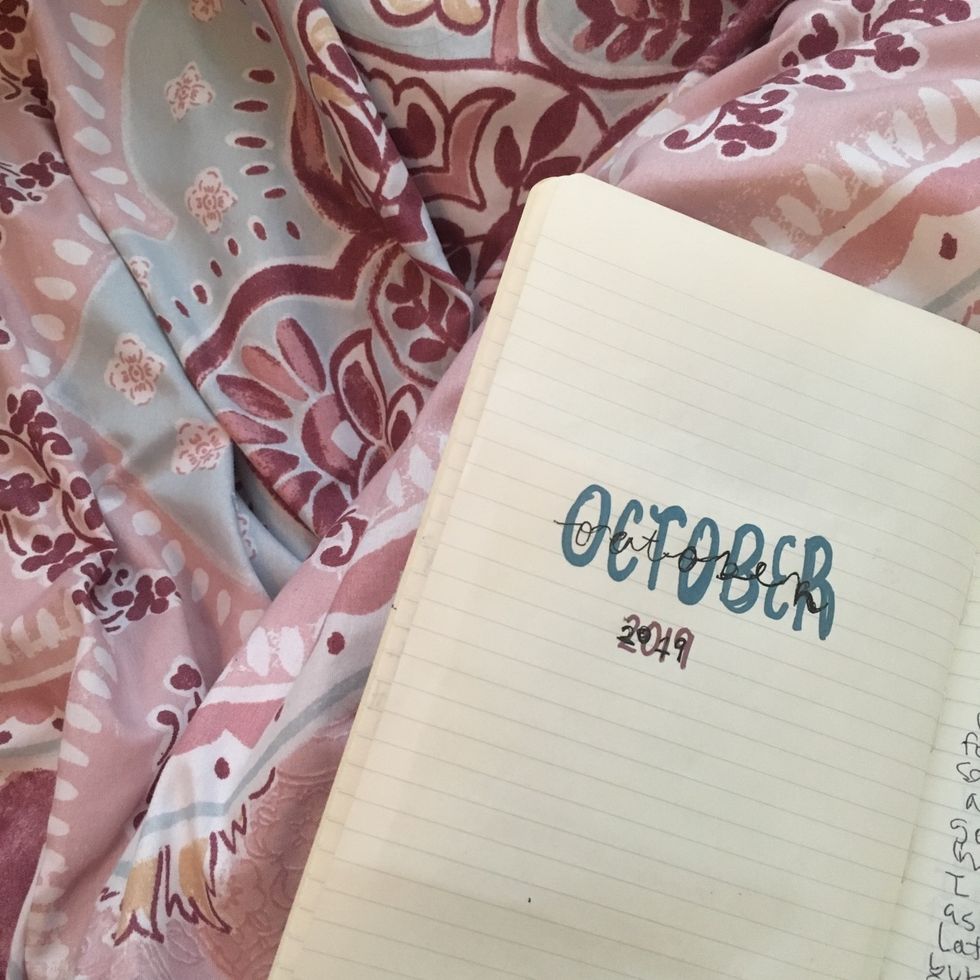Journaling is often celebrated as a powerful tool for self-reflection, emotional release, and personal growth. Whether you’re scribbling down your daily thoughts, crafting elaborate bullet journals, or maintaining a gratitude diary, the act of putting pen to paper (or fingers to keyboard) is widely believed to offer numerous mental and emotional benefits. However, like many activities intended to improve well-being, journaling may also have its downsides.
We will explore the potential negative effects of journaling. While journaling can be an excellent practice, it’s essential to approach it mindfully to avoid any adverse outcomes. We will delve into how journaling, if not done correctly, might exacerbate mental health issues, trigger emotional discomfort, or even lead to physical strain.

Journaling is a versatile practice that involves writing down your thoughts, feelings, experiences, or ideas. It can take many forms, depending on your goals and preferences. Some people use journaling to reflect on their daily lives, others to plan their future, and still others to process emotions. Here are some common types of journaling:
- Reflective Journaling: Involves writing about your thoughts and feelings related to daily events, often with the goal of gaining insight or learning from your experiences.
- Bullet Journaling: A method of personal organization where tasks, events, and notes are logged in a systematic and creative way.
- Gratitude Journaling: Focusing on the positive aspects of life by recording things you are thankful for daily.
Journaling has been around for centuries, with famous figures like Leonardo da Vinci, Frida Kahlo, and Anne Frank using it to document their lives and thoughts. Today, it remains a popular tool for personal development and mental health, recommended by therapists, life coaches, and self-help authors alike.
Popularity and Benefits of Journaling
The popularity of journaling has surged in recent years, especially as people seek ways to manage stress, improve mental health, and enhance productivity. Social media platforms like Pinterest and Instagram are filled with aesthetically pleasing journal layouts, tips for effective journaling, and success stories from those who have benefited from the practice.
Some of the widely recognized benefits of journaling include:
- Emotional Release: Writing down your feelings can provide a cathartic release, helping you process emotions and reduce stress.
- Self-Reflection: Journaling allows you to reflect on your thoughts, behaviors, and life choices, leading to greater self-awareness.
- Mental Clarity: Organizing your thoughts on paper can help clear your mind and improve focus.
- Personal Growth: By tracking your goals, challenges, and achievements, you can monitor your progress and identify areas for improvement.
Despite these benefits, it’s crucial to recognize that journaling is not a one-size-fits-all solution. Just as it can enhance your well-being, it can also have unintended consequences if approached without care.

Can Journaling Have Negative Effects?
Journaling is often lauded for its positive impacts, but like any tool, it can have drawbacks if not used mindfully. In this section, we will explore some of the potential negative effects of journaling on mental health, emotional well-being, and more.
Mental Health Impacts
1. Overemphasis on Negative Thoughts
One of the most significant concerns with journaling is the tendency to dwell on negative thoughts. When journaling becomes a space where you consistently focus on problems, frustrations, or fears, it can lead to rumination—the repetitive and passive focus on distress. While reflecting on negative experiences can be constructive when done with a solution-oriented mindset, it can also exacerbate feelings of anxiety and depression if you’re not careful.
- Example: Imagine someone who journals every night about their stressful day at work. Over time, this practice could intensify their perception of work as overwhelmingly negative, making them feel even more stressed and anxious.
Research supports this concern. A study published in the journal Behavior Therapy found that individuals who engaged in rumination were more likely to experience symptoms of depression and anxiety. The key is to ensure that your journaling practice doesn’t become a cycle of negativity but instead encourages a balanced reflection of both positive and negative experiences.
2. Perpetuating Anxiety or Depression
Another potential pitfall is the risk of journaling perpetuating anxiety or depression. When journaling becomes a space to endlessly explore your worries, fears, and negative emotions, it might deepen those feelings rather than alleviate them. This is particularly true if the journaling process lacks structure or a focus on solutions.
- Case Study: Consider someone with social anxiety who journals extensively about every social interaction. If they focus solely on perceived mistakes or awkward moments, they may reinforce their fears, making it harder to overcome anxiety in the long run.
Experts recommend a more structured approach to journaling, such as cognitive behavioral therapy (CBT) journaling techniques, which encourage individuals to challenge and reframe negative thoughts. By doing so, you can use journaling as a tool to combat anxiety and depression rather than exacerbate them.
Emotional Triggers
1. Reliving Trauma
For individuals who have experienced trauma, journaling about those events can sometimes do more harm than good. Writing about traumatic experiences can reopen emotional wounds, leading to intense emotional responses or even retraumatization. This is especially risky if the journaling process lacks a therapeutic framework or support system.
- Example: A person who survived a traumatic car accident may find that journaling about the incident brings back vivid memories and emotions, which can be overwhelming and distressing.
While some forms of therapeutic journaling, like trauma-focused cognitive behavioral therapy (TF-CBT), are designed to help individuals process trauma in a safe and structured way, unstructured journaling can sometimes have the opposite effect. If you’ve experienced trauma, it may be helpful to consult with a therapist before using journaling as a tool for processing those experiences.
2. Self-Criticism and Perfectionism
Journaling can also feed into perfectionistic tendencies or excessive self-criticism. When individuals use their journals as a tool for constant self-analysis, they may become overly focused on their flaws, mistakes, or perceived shortcomings. This can lead to a cycle of negative self-talk and diminished self-esteem.
- List of Potential Self-Critical Thoughts in Journals:
- “Why did I say that during the meeting?”
- “I should have done better on that project.”
- “I’m not making enough progress towards my goals.”
- Data Point: A study in the Journal of Personality and Social Psychology found that individuals with high levels of perfectionism were more prone to self-critical thinking, which can be exacerbated by journaling.
To counteract this, it’s important to balance self-reflection with self-compassion. Journaling prompts that encourage you to recognize your strengths, achievements, and positive qualities can help create a more balanced perspective.
Potential Negative Effects of Journaling and Mitigation Strategies
| Negative Effect | Description | Mitigation Strategy |
|---|---|---|
| Overemphasis on Negative Thoughts | Focusing too much on problems can lead to rumination and increased anxiety. | Incorporate positive reflections and solution-oriented writing. |
| Perpetuating Anxiety or Depression | Journaling may deepen negative emotions if not done mindfully. | Use structured journaling techniques like CBT. |
| Reliving Trauma | Writing about trauma can reopen emotional wounds and lead to retraumatization. | Seek therapeutic support before journaling about trauma. |
| Self-Criticism and Perfectionism | Excessive self-analysis can lead to negative self-talk and diminished self-esteem. | Practice self-compassion and focus on strengths as well. |
As we can see, while journaling can indeed have its downsides, these can often be mitigated with careful and mindful practice.

Are There Physical Downsides to Journaling?
While the mental and emotional aspects of journaling often take center stage, it’s also important to consider the physical implications of this practice. Depending on how you journal—whether by hand or digitally—there can be various physical downsides that, if left unaddressed, might impact your well-being.
Time Consumption
1. Time-Intensive Practice
Journaling, especially when done daily, can be a significant time commitment. For some, the process of writing down thoughts, detailing experiences, or organizing a bullet journal can take up a considerable portion of their day. While this might be a valuable investment for personal growth, it can also lead to time management challenges, particularly if journaling begins to interfere with other important activities.
- Example: A person might spend an hour each evening reflecting on their day, leaving less time for other activities such as exercise, socializing, or simply relaxing. Over time, this could lead to a sense of imbalance in daily routines.
Time management experts often recommend setting specific limits on journaling time to ensure that it remains a healthy and sustainable practice. For instance, you might allocate 15-30 minutes each day for journaling, ensuring that it doesn’t consume more time than necessary.
Physical Strain
1. Hand Pain or Fatigue
For those who prefer traditional journaling with pen and paper, the physical act of writing can sometimes lead to discomfort or even pain. Hand fatigue, cramps, or even repetitive strain injuries (RSI) can occur if you’re spending long periods writing without proper ergonomics or breaks.
- List of Common Physical Symptoms:
- Cramping in the fingers or hand.
- Pain in the wrist or forearm.
- Stiffness in the joints after writing for extended periods.
- Case Study: A student who journals extensively by hand might begin to experience pain in their dominant hand, leading to discomfort during other activities like typing or holding objects.
To minimize the risk of hand strain, it’s important to practice good ergonomics while journaling. This includes using a comfortable pen, maintaining a relaxed grip, and taking regular breaks to stretch your hands and fingers. Digital journaling can also be a good alternative for those who experience physical strain from writing by hand.
2. Eye Strain (for Digital Journaling)
On the flip side, those who journal digitally might face a different set of challenges. Staring at a screen for prolonged periods can lead to eye strain, headaches, and even disruptions in sleep patterns due to blue light exposure. This is particularly relevant for those who journal late at night.
- Data Point: The American Optometric Association (AOA) notes that computer vision syndrome (CVS) affects up to 90% of people who spend three hours or more a day at a computer. Symptoms include dry eyes, headaches, and blurred vision.
- Tips to Reduce Eye Strain:
- Follow the 20-20-20 rule: Every 20 minutes, take a 20-second break to look at something 20 feet away.
- Adjust screen brightness and contrast to comfortable levels.
- Use blue light filters, especially if journaling in the evening.
Balancing the Physical Aspects of Journaling
Balancing the physical aspects of journaling requires awareness and practical adjustments. Whether you’re a fan of traditional pen-and-paper journaling or prefer digital tools, it’s crucial to pay attention to your body’s signals and make changes as needed. Here’s a simple chart summarizing these considerations:
Physical Downsides of Journaling and Preventive Tips
| Physical Downside | Cause | Preventive Tips |
|---|---|---|
| Hand Pain or Fatigue | Prolonged writing by hand | Use comfortable pens, maintain good ergonomics, take regular breaks. |
| Eye Strain | Extended screen time for digital journaling | Follow the 20-20-20 rule, adjust screen settings, use blue light filters. |
| Time Consumption | Time-intensive journaling practices | Set time limits, prioritize other activities, consider alternative journaling methods. |
Conclusion of Physical Aspects
While journaling is a powerful tool for personal growth and self-reflection, it’s important to recognize and address the potential physical downsides. By making simple adjustments to your journaling practice—whether it’s limiting time, practicing good ergonomics, or being mindful of screen use—you can enjoy the benefits of journaling without the accompanying physical strain.